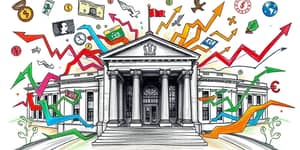
In an ever-evolving market landscape, interest rates remain the compass guiding investor decisions. Understanding this dynamic is critical for navigating uncertainty and seizing opportunity in 2025.
Interest rates influence the cost of borrowing, corporate profits, and consumer spending. They shape investor psychology and the relative attractiveness of cash, bonds, equities, and alternatives. Even subtle shifts can spark seismic realignments in portfolios.
By monitoring rate cycles, investors can anticipate where capital flows will accelerate or retreat, staying ahead of broad market moves rather than reacting to them.
The global outlook for 2025 is defined by global central banks are diverging in policy. Europe’s ECB, BoE, and SNB are on a path to cut rates into neutral or negative territory, seeking growth amid soft inflation.
Conversely, the Federal Reserve has paused easing, citing US resilience and steady progress toward its 2% target. In Japan, the BOJ raised rates to a 17-year high to combat local price pressures.
This divergence underpins a risk-on environment in some regions, while others face fresh challenges in yield management and currency dynamics.
In 2024, carry and credit risk drove returns. In 2025, with the tightest credit spreads in memory, the focus shifts to carry preservation and rates management.
The performance gap between credit and equities has narrowed. High yield led in 2024, but limited room for further spread compression demands sharper selection.
Equities may capture new inflows as rate cuts loom in Europe and low-growth Japan, bolstering global growth prospects.
With shifting rate regimes, passive benchmarks may lag. Investors should favor active, nimble strategies over passive ones, seeking relative-value trades and sector rotation.
Managers adept at reallocating across rate cycles can capture asymmetrical returns when spreads or pricing anomalies emerge.
Credit spreads entered 2025 at historical tights, limiting upside from further compression. Default rates in developed markets are forecast to rise moderately, while emerging markets benefit from stronger growth fundamentals.
Moody’s revised its outlook to stable, anticipating global AUM growth as rates fall and investor confidence rebounds.
Individuals should reassess fixed income allocations in light of lower yields, considering complementing bonds with dividend-paying equities or private credit to enhance income.
Institutions must ensure liability-driven strategies account for potential curve inversions and integrate active credit overlays to manage spread risk.
Across the board, scenario planning and stress testing are vital to withstand sudden rate surprises or geopolitical shocks.
Interest rates will remain a dominant force in 2025, dictating asset performance and capital flows. By embracing active management, focusing on relative value, and vigilantly monitoring policy and geopolitical developments, investors can transform uncertainty into opportunity.
With thoughtful strategy and disciplined execution, portfolios can thrive in this era of diverging rate regimes and evolving market dynamics.
References













